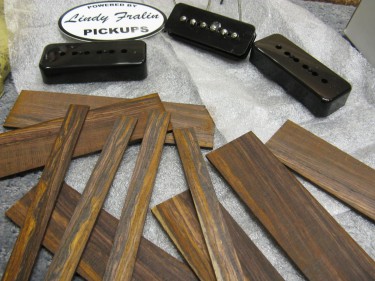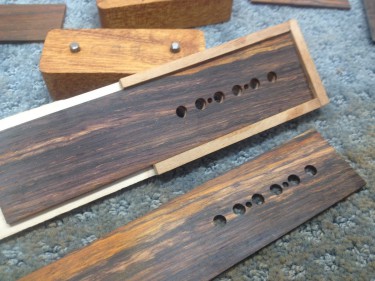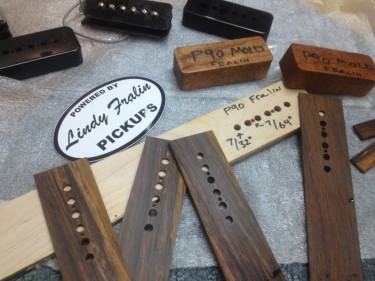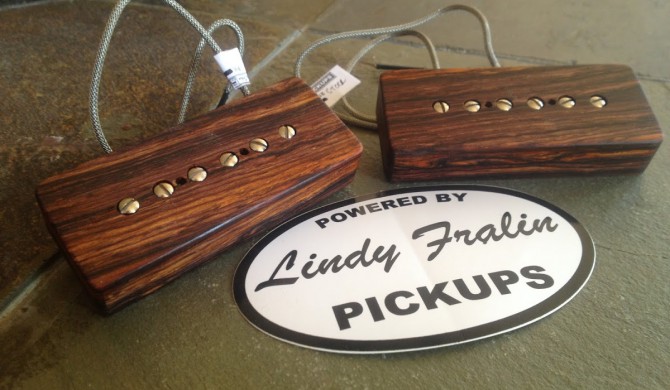20
Everyone has their pet peeves I suppose. I am not a huge fan of plastic on guitars, be it binding, purfling, electric guitar knobs …. or pickup covers. My guitars are carefully designed, sculpted and finished with just a bit of obsession to details.

Cocobolo Rosewood cut for pickups
For pickup covers, first I select the wood which compliments the guitar. In this case the instrument is to be finished in a orange sunburst. Cocobolo Rosewood is the obvious choice, with rich orange colors and wonderful dark ink lines. Cocobolo is a fantastic wood – hard, resonant and beautiful. The wood oxidizes over time, darkening to very rich and warm hues. Unfortunately Cocobolo dust is also very dangerous to breath. It is a sensitizer – the more one breathes the more one is likely to incur increasingly allergic reactions. When cutting and sanding, precautions are taken, vacuuming with a HEPA filter and wearing a protective breathing mask.

Top cover carrier used to index magnetic pole and screw holes
With the holes drilled I finally start assembling the pickup covers. P90 plugs are made from Mahogany and have 3/16″ steel pins to correctly register the pickup cover on center. The sides are tacked in place with cyanoacrylate (super glue). A bit of paste wax keeps the plug from becoming glued to the cover. Once the sides are glued to the cover top, the plugs are removed.

Tooling jigs – plugs and drill index carrier – for drilling and assembling covers
Covers take several hours to create. A small detail, maybe, but such details bring design cohesion to the final instrument. Do the rosewood covers contribute to the tone of the instrument? Of course not – but I’m sure someone will speculate nonetheless!

